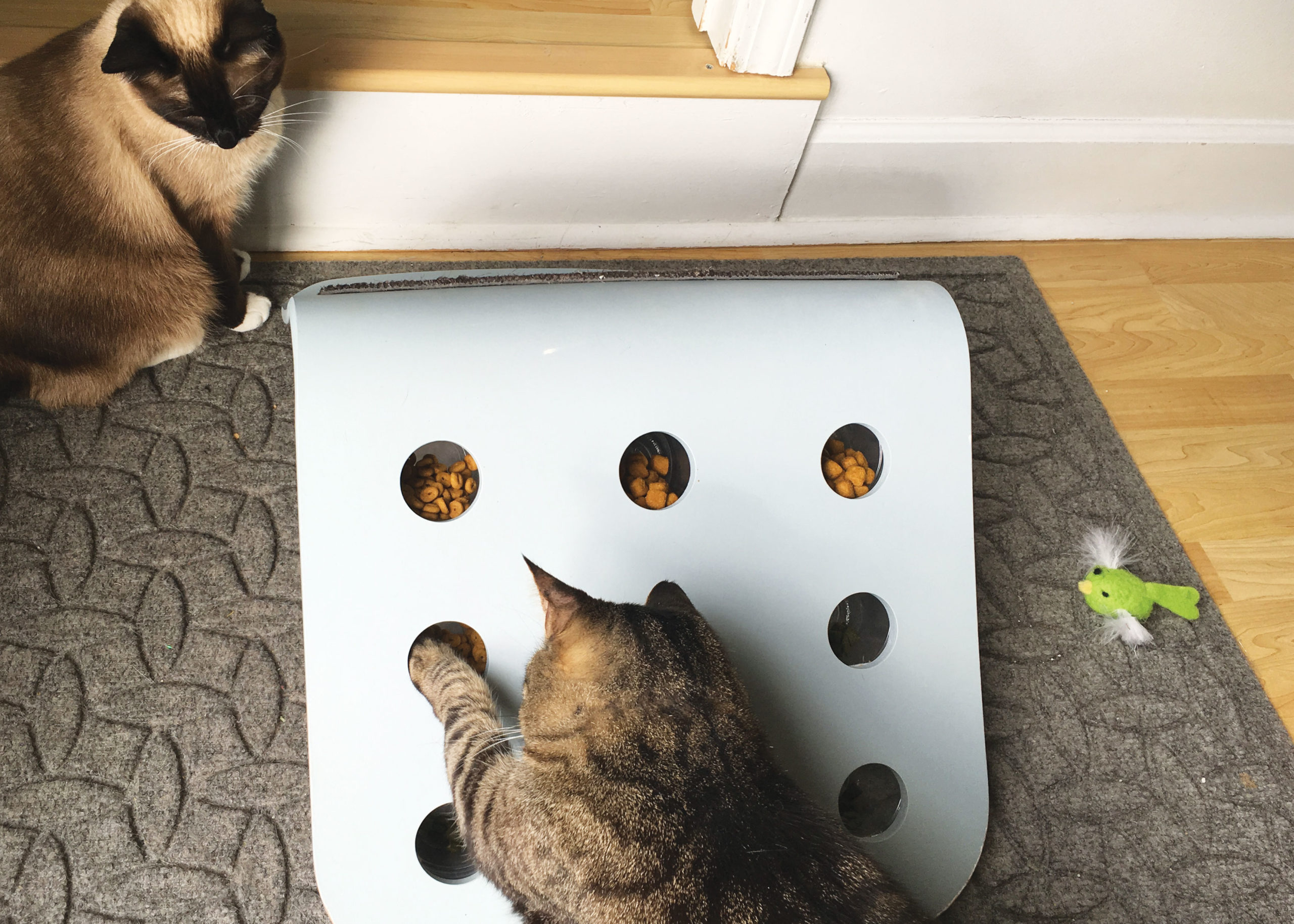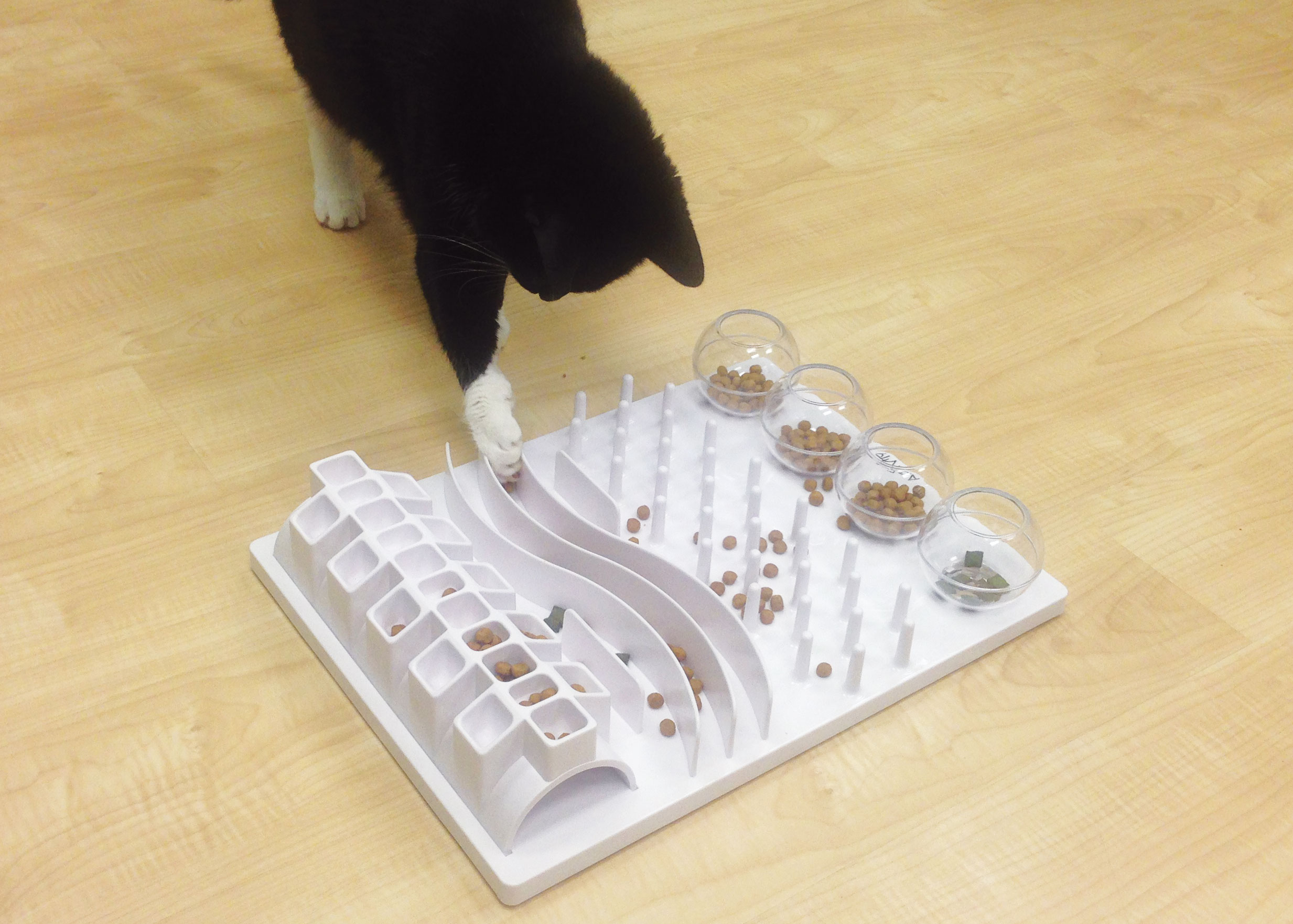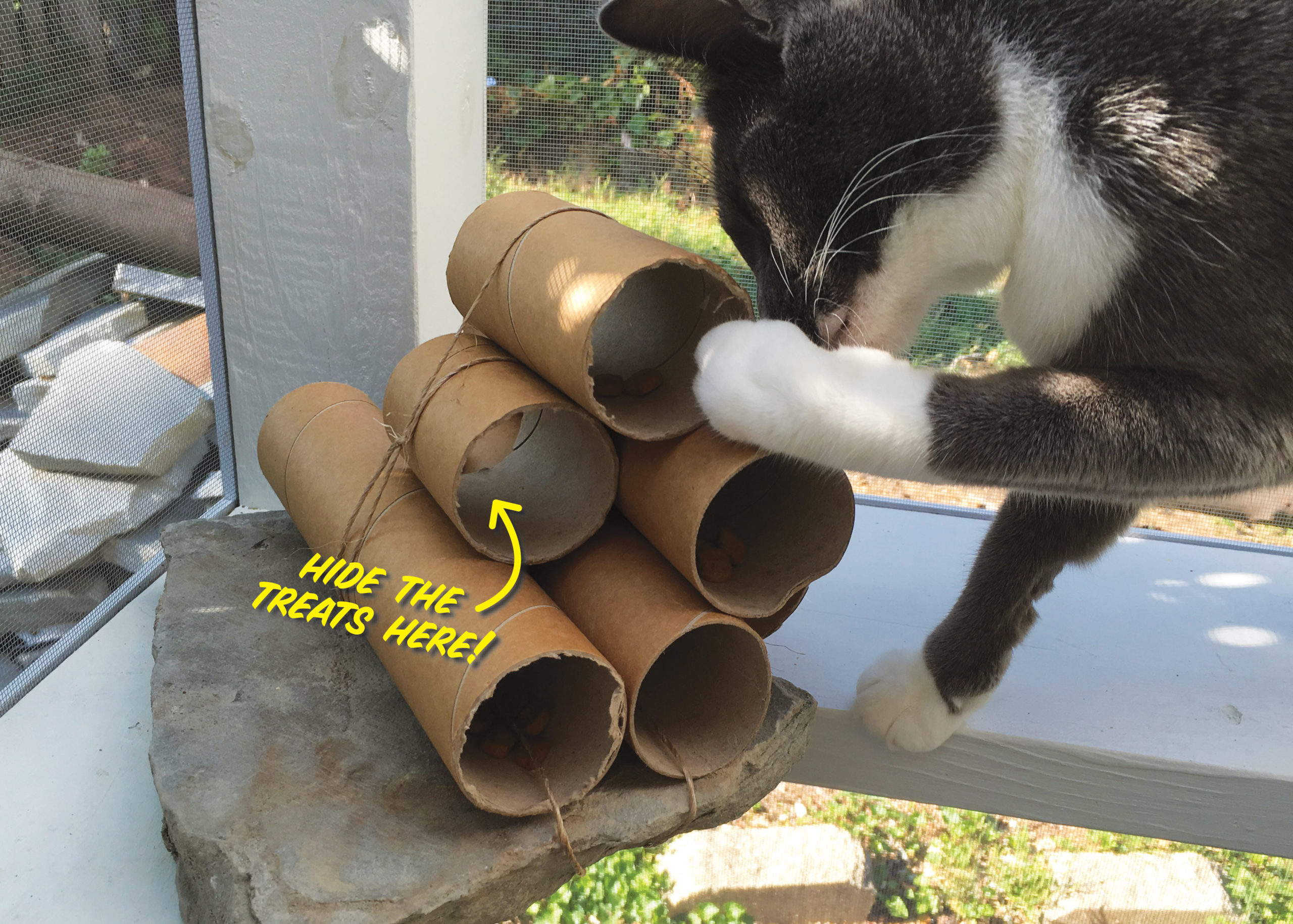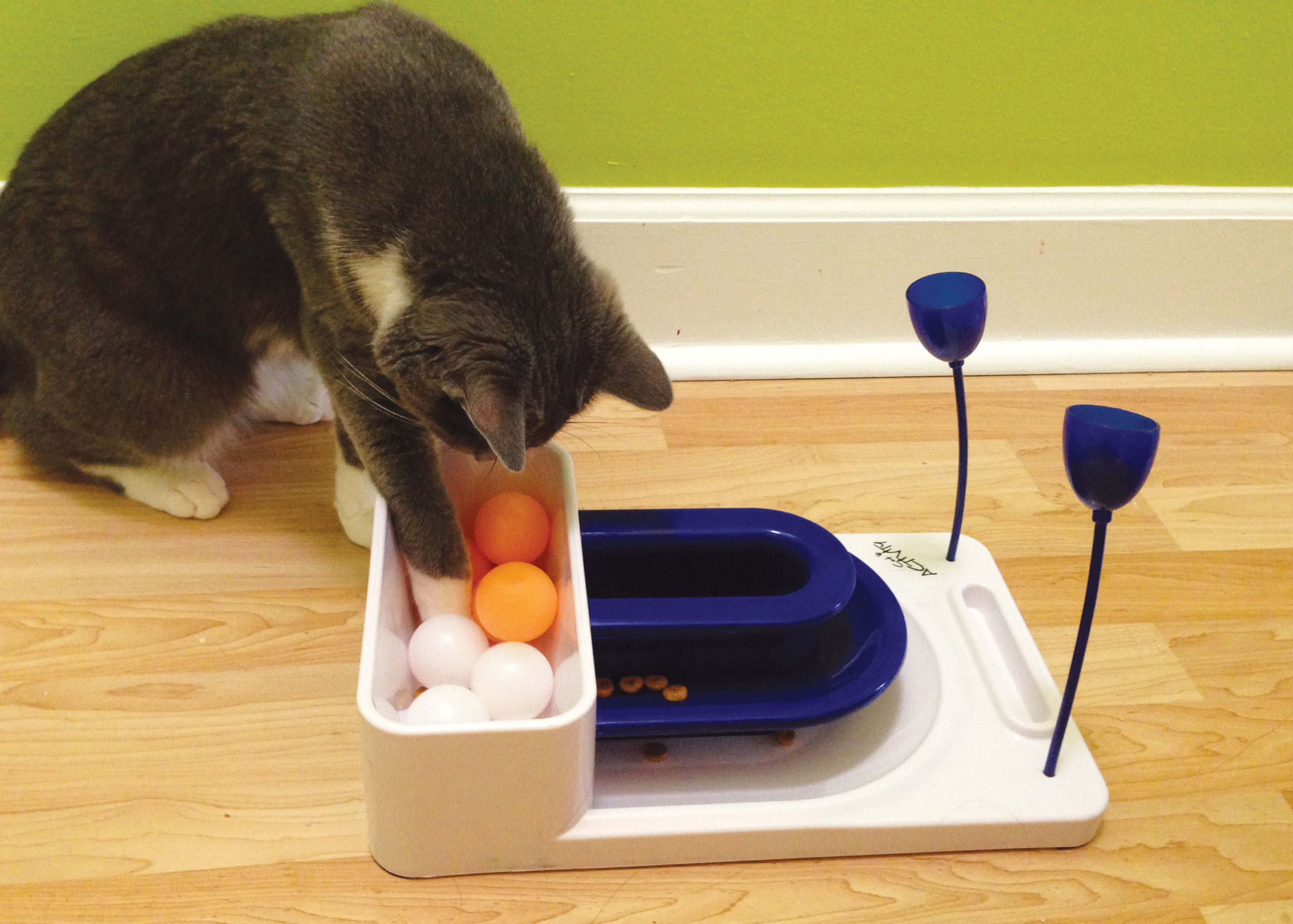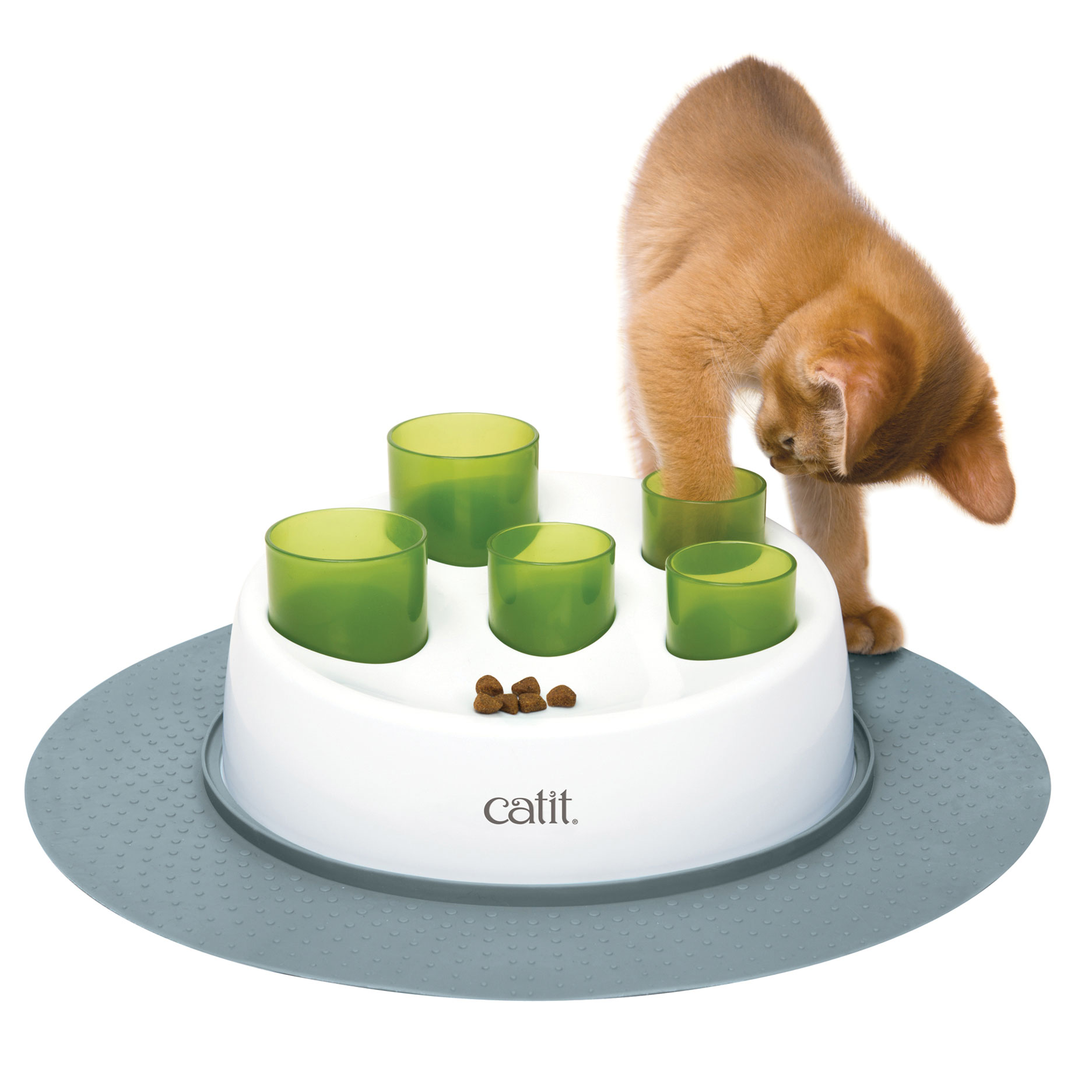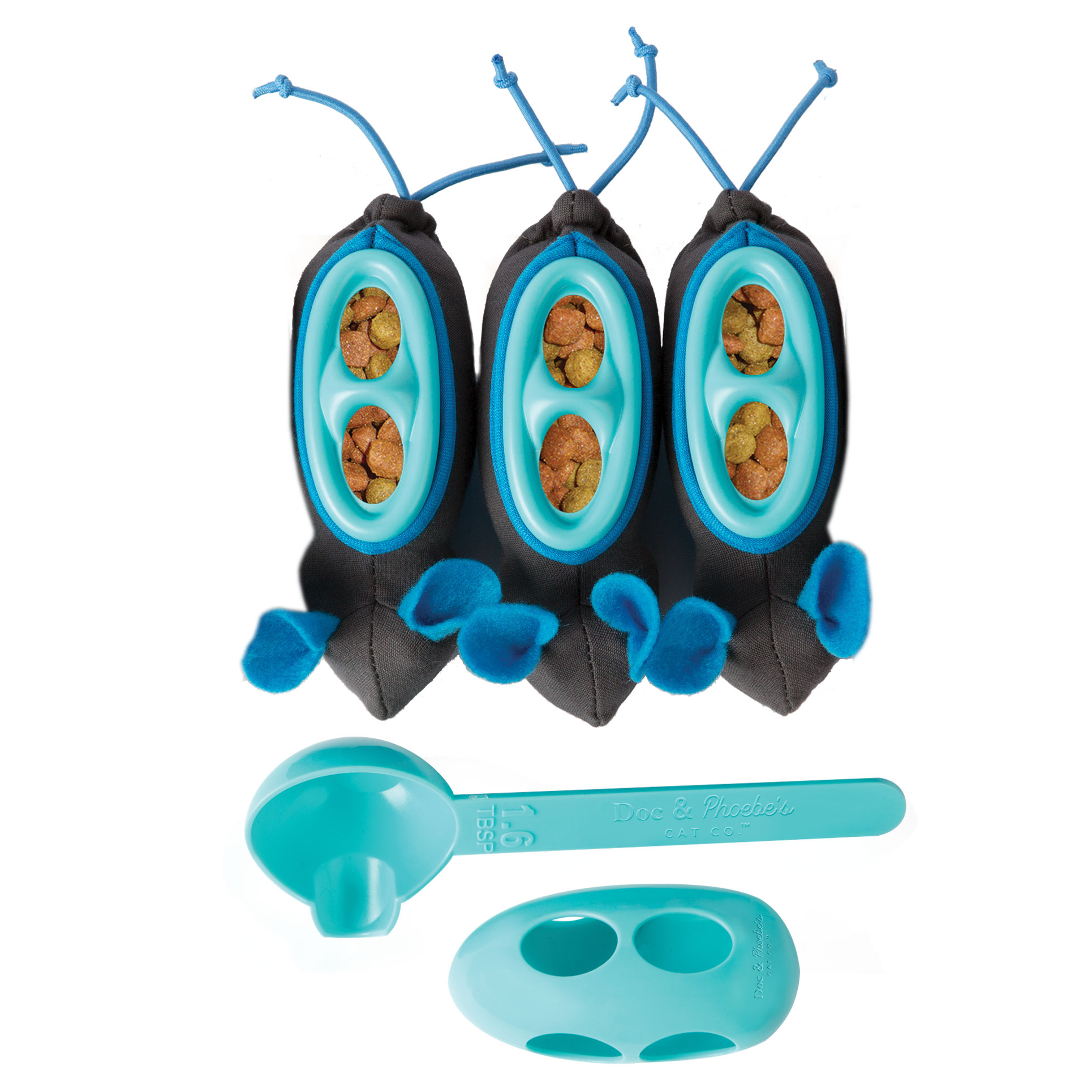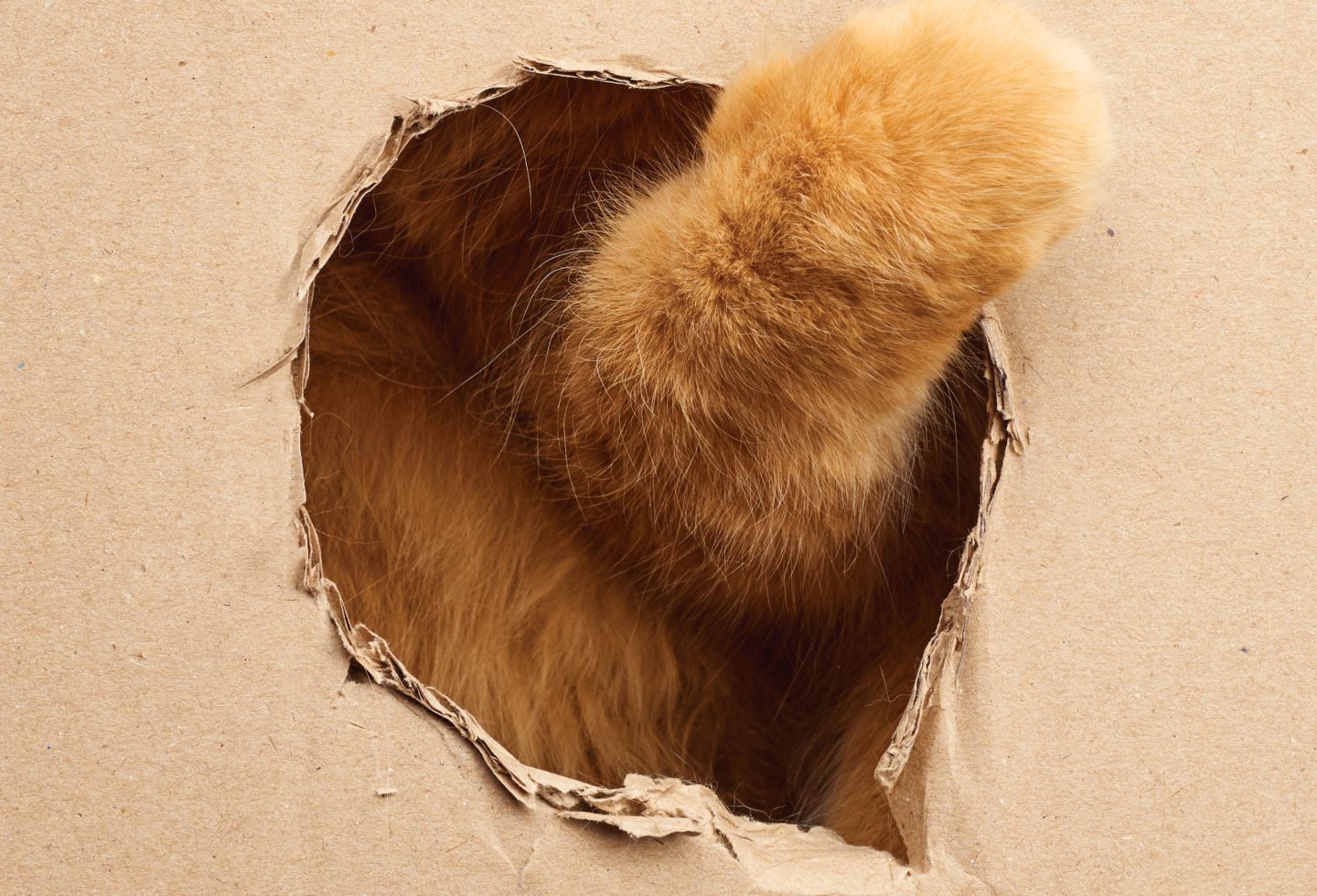

DIY Food Puzzles For Cats!
Homemade foraging toys offer cats important environmental enrichment—and can solve behavioural problems too!
Cats are born killers by nature, furthermore, hunting is one behaviour we never asked them to change during domestication—we wanted them to kill mice and rats. But then we brought them into our homes, handed them a bowl of food, and essentially took their jobs away. The result? Frequently bored house cats. But fear not. You can provide an enriched environment for your cat through toys, vertical space, and safe plants (among other things), as well as an often overlooked option: food puzzles!
What’s a food puzzle? Sometimes called foraging toys, food puzzles are objects that require interaction to release food or treats. This type of enrichment is often offered to animals in zoos and sanctuaries to encourage natural food-searching behaviours, whether the animal is a predator or forages for plants. We can also offer food puzzles to cats, giving them an outlet for their instinct to work for food.
Food puzzles come in different shapes, sizes and styles. You can use mobile puzzles, such as a ball with holes in it that you fill with dry food. Your cat rolls the ball around, and food is intermittently released from the holes. Stationary puzzles are boards or other stable items that have cups and tunnels that your cat can scoop food out of with a paw. Some puzzles can be modified for use with wet food as well. Many pet stores and online sources have food puzzles available, but there are also easy ways you can provide your cat with DIY puzzles using common household objects.
Why use food puzzles?
Food puzzles can offer benefits to almost every cat, young or old. Many cat owners work long hours, and their cats may be sitting at home with nothing to do all day but nap! Those same cats may be wound up in the evening when owners would like to sleep, or they might engage in unwanted attention-seeking behaviours like meowing or jumping on counters because they don’t have enough to keep them busy. Food puzzles can help prevent and solve behaviour problems by providing your cat with challenge and mental stimulation. Time spent busy with a food puzzle is time your cat is not engaging in naughty behaviour.
Food puzzles also encourage healthy feeding behaviour. Did you know that cats are naturally grazers? Given the choice, they would eat eight to 15 small meals per day, so a food puzzle gives your cat more control over their feeding schedule. Your cat can interact with a puzzle for a few pieces of food and go back to it later when they feel like a snack. Food puzzles slow down eating, which can be helpful if you have cats who eat at different speeds, or if you’re trying to help an overweight cat feel more satiated before they wolf down too much food.
Perhaps most importantly, when introduced and used correctly food puzzles can be great fun for you AND your cat. Your cat will be rewarded for playing with the food puzzle, and you will be rewarded with cuteness while watching them!
How do I get started?
Your cat’s first foraging toy should be easy so they can be freely rewarded for interacting with the puzzle. Both rolling and stationary puzzles can fit the bill. Rolling puzzles often provide more challenge and can be made more difficult, whereas stationary boards can add novelty and are an excellent choice for seniors and cats with special needs.
For rolling puzzles start with clear objects with at least three holes for food to dispense. Select a lightweight, easily rolled object so it is less challenging, and initially less frustrating. Sprinkle some food around the toy to get them started.
Some cats prefer to have the puzzle placed in their normal feeding area. For others, putting it in a new location sparks more interest. Try both! The goal is to scatter the puzzles throughout the home, especially in a multi-cat household. Fill the puzzles at least half full: an almost empty toy with 3 or 4 pieces of food left inside is very challenging and could frustrate your cat.
“Food puzzles also encourage healthy feeding behaviour. Did you know that cats are naturally grazers? Given the choice, they would eat eight to 15 small meals per day.”
Don’t be disappointed if your cat does not take to it immediately. There is little motivation to work for what has been readily available in a bowl for years. Novel food often increases interest, so add a few treats for a “jackpot” reward.
Once your cats get the hang of foraging, gradually increase the challenge. Cats who have been strictly meal fed may take to foraging so quickly that they can soon transition to one- or two-holed objects. You can try puzzles that roll less predictably or are opaque so that your cats must be motivated by scent and previous experience.
You can also combine toys, by taking a smaller puzzle that the cat has mastered and placing it inside a larger food puzzle. Now your cat must work even harder to achieve the reward. Yes, they really can get that good at foraging!
Do-It-Yourself!
Homemade options
If you can put a hole in it, it can be a food puzzle! One of the easiest food puzzles you can make at home is to poke holes in an empty plastic water bottle. Fill the bottle about 1/2 to 3/4 full with dry food and place it on the floor for your cat.
Household items such as yogurt cups, paper towel rolls, and old medicine bottles can all be turned into a food puzzle. For stationary DIY puzzles try an egg carton, ice cube tray, or a shoe box. You can even make a wet food puzzle out of an old coffee mug! Turn the mug on its side on a placemat and allow your cat to scoop food out with their paw.
The benefits
Food puzzles offer many benefits to cats. Foraging offers an often overlooked form of enrichment by providing an outlet for your cats to hunt and problem solve. These toys create “positive frustration,” meaning that once the cat solves the puzzle they are rewarded for their accomplishment. Food puzzles can also encourage peace in your multi-cat household! Meal feeding increases competition and decreases environmental control and can lead to aggression between cats. Food puzzles increase available resources and allow for free feeding, which reduces the tension in your home.
Try These! Modern Cat’s Picks for Food Puzzles
Encourage natural instincts while reducing binge eating. Senses 2.0 Digger, from $20, catit.ca
Let your cat hunt for her dinner, whether wet food or kibble! Indoor Hunting Feeder, from $20, docandphoebe.com
Join the newsletter and never miss out on cat content again!
"*" indicates required fields
By clicking the arrow, you agree to our web Terms of Use and Privacy & Cookie Policy. Easy unsubscribe links are provided in every email.





